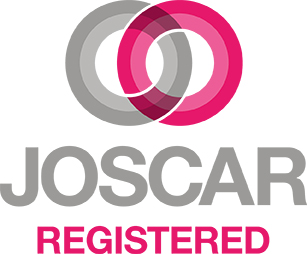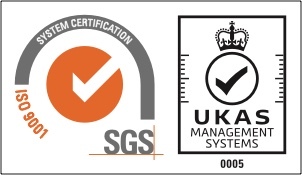
Relationship management, and in particular stakeholder engagement, are now vital to the success of a wide range of organisations, their activities and projects. The question ‘are you engaging your stakeholders?’ is now ‘what is your stakeholder engagement strategy?’, and ‘what is the best system to manage engagement?’
As the work you do and the projects you run become more important, you will affect more and more people. The more people you affect, the more likely it is that your actions will impact people who have power and influence over your work. These people could be strong supporters of your projects (or they could block them), so you need to identify who these people are and win them over.
“Behind good brands lie stakeholder companies”. Will Hutton
Stakeholder Management is the process by which you identify your key stakeholders and win their support.
In this blog, we will explore:
- What is a stakeholder?
- How you can define all your stakeholders
- How to develop an action plan to actively manage and support them
- How to keep your relationships with them alive
- How GBS Corporate Training can help to build stakeholder management skills in your organisation
- The key benefits that great stakeholder management can bring to your organisation
If you want to find ways to improve your relationships with your stakeholders then talk to GBS Corporate about how we can help.
What is a stakeholder?
Almost every project you work on – large or small, simple or complex – needs input from other people. And, chances are you'll depend on some of them for support, investment and resources.
According to the Chartered Management Institute, a 'stakeholder is any group or individual with an interest or a stake in the operations of a company or organisation - anyone who can affect or be affected by its activities'.
This includes:
Internal stakeholders such as:
- Employees
- Departments
- Divisions
- Subsidiary companies
External stakeholders such as:
- Business partners
- Customers
- Suppliers
- Wider groups within society, e.g. government departments, the media and pressure groups
Stakeholder management is the process of engaging with these people, and maintaining good relationships with them. You'll likely be working with people in many different roles, with varying levels of influence over your project or activities. Communicating with each one in the right way can play a vital part in keeping them 'on board'.
Fundamental to stakeholder thinking is that the interests of all stakeholders are taken into account in order to maximise the value of an organisation. The needs of each stakeholder should be understood, respected and incorporated into company thinking and plans.
To achieve this, managers need to identify their key stakeholders, understand their interests, and know their contribution to (or effect) on the organisation and its ability to meet its objectives.
Do you know who your stakeholders are?
At a strategic level, an organisation may conduct a broad review of stakeholder relationships to inform the strategy-making and objective-setting process. At an operational level, an individual manager may undertake a stakeholder analysis within their own division or department in order to better manage the motivation, cohesion and commitment of key stakeholder groups. Equally stakeholder management is relevant to projects and programmes.
“If you work for and eventually lead a company, understand that companies have multiple stakeholders including employees, customers, business partners and the communities within which they operate”. Don Tapscott
Stakeholder Analysis is the first stage of this, where you identify and start to understand your most important stakeholders.
There are three steps to follow in Stakeholder Analysis:
1. Identify who your stakeholders are
2. Work out their power, influence and interest, so that you know who you should focus on
3. Develop a good understanding of the most important stakeholders, so that you know how they are likely to respond, and how you can win their support
Start by brainstorming who your stakeholders are. As part of this, think of all the people who are affected by your work, who have influence or power over it, or have an interest in its successful or unsuccessful conclusion.
Also important is gaining an understanding of your internal stakeholders, such as immediate staff, suppliers and contractors, broader companies or alliances and shareholders. Mapping your internal stakeholders will allow you to investigate whether you have the right resources and whether your team will function effectively.
Primary stakeholders define the business and are vital to its continued existence. For example, the following are normally considered primary stakeholder groups:
- employees
- shareholders and/or investors
- customers
- suppliers
Secondary stakeholders are those who may affect relationships with primary stakeholders. For example, an environmental pressure group may influence customers by suggesting that your products fail to meet eco-standards. Secondary stakeholders could include:
- government – central or local government bodies
- legal authorities – inspectors and regulators
- the media – press, broadcasters, online media
- social groups - consumer groups, pressure groups, community groups
- commercial organisations – landlords, business partners, competitors
The aim of stakeholder analysis is to provide decision-makers with information about the individuals and groups that may affect the achievement or otherwise of their goals. This makes it easier to anticipate problems, gain the support of the most influential stakeholders, and improve what the organisation offers to different groups and individuals and how it communicates with them.
Developing an action plan for stakeholder discussions and how to manage them
Once you have a list of people and organisations that are affected by your work, you need to identify those that may have the power either to block that work or to advance it. Some may be interested in what you are doing, while others may not care, so you need to work out who you need to prioritise.
“To make progress we have to build a multi-stakeholder process, harnessing the appropriate energies”. Mary Robinson
You can map out your stakeholders, and classify them according to their power over your work and their interest in it. Put yourself in the place of each stakeholder and ask yourself what their perspective of your business may be. What are their needs and concerns? What affects or influences them? What do they believe? What do they value? What motivates them? What potential threats or opportunities do they represent?
Consider what you know about their actual and previous behaviour and what underlies it. Key questions that can help you understand your stakeholders include:
- What financial or emotional interest do they have in the outcome of your work? Is it positive or negative?
- What motivates them most of all?
- What information do they want from you, and what is the best way of communicating with them?
- What is their current opinion of your work? Is it based on good information?
- Who influences their opinions generally, and who influences their opinion of you? Do some of these influencers therefore become important stakeholders in their own right?
To measure the possible influence of your stakeholders, identify their level on a scale ranking from high, medium to low:
High: indicates a stakeholder who has significant power to impact decisions, timeframes, or outcomes
Medium: indicates a stakeholder with a significant interest in the project, however with a lower level of power to affect project change
Low: indicates a stakeholder with little ability to change project outcomes
Understanding levels of influence will allow you to predict how a particular stakeholder may interact directly with your project team or with others. The range of possible influence is broad, from positive sentiment and support through to activism and engagement of other community members against your project.
How to keep relationships with stakeholders alive?
Stakeholder relationship management includes communicating with people early and often so they fully understand the benefits of your project. Having an understanding of a situation means people are more likely to support you when necessary. It also means that even if stakeholders don’t agree with the final decision, they have the benefit of understanding the process, history and the trade-offs made. Therefore, they will be less likely to aggressively object at the final stage.
The key is to find a balance and ensure the right tactics suit the appropriate stakeholders. If you get the process right, then your stakeholders will champion your project. They will help your project reach positive outcomes and people will be more accepting of your decisions.
Now, work out what you need to do to win and manage the support of your stakeholders. Bearing in mind the time and resources that are available to you, identify how you will manage the communication to, and the input from, your stakeholders. Devise a plan that communicates with them as simply and efficiently as possible, with just the right amount of appropriate information.
Two-way communication, involving dialogue and negotiation with stakeholders can lead to a better understanding of stakeholder perspectives. It can also foster your credibility with stakeholders and contribute to the development of relationships based on trust and respect, the resolution of conflicts and the evolution of win-win scenarios.
Monitor the feedback you get from stakeholders and use it as a basis for further discussion and action.
Develop stakeholder management skills in your business
You can never lose sight of the value in building positive, trusting relationships with the stakeholder community. Your authority and reputation as an organisation depends on it.
Stakeholder management is critical for the successful conclusion of any project. It is critical for managing any client relationship, and in the effective fulfilment of Service Level Agreements.
The GBS Stakeholder Management blended learning course, part of GBS' Leadership and Management suite of courses, is relevant for anyone in business who has to manage any stakeholders, and will enable them to develop their stakeholder strategy map, and explore techniques and learn tools to ensure each relationship is productive and viewed by the stakeholder as positive.
“The business of business isn't just about creating profits for shareholders — it's also about improving the state of the world and driving stakeholder value”. Marc Benioff, Salesforce, Chairman and CEO
By investing in stakeholder management skills, your business will benefit from the following:
1. Build better relationships
Early engagement with stakeholders achieves genuine relationships characterised by trust, mutual understanding and cooperation. Better relationships lead to better outcomes for all stakeholders which enhance the credibility of your organisation.
2. Ensure you identify all your stakeholders
Good stakeholder management systems have the capacity to profile and segment all your stakeholders.
3. Service significant stakeholders
Prioritising stakeholders by level of influence allows time resources to be dedicated accordingly.
4. Put resources where they’re needed
If you can map where your stakeholders are and what they are talking about, then you have a better case for getting resources and attention where it’s needed, when it’s needed.
5. Protect your brand
A good Stakeholder Management System enables you to manage your corporate reputation and third party advocacy, as well as media coverage.
6. Make better decisions
The corporate intelligence provided by the Stakeholder Management system yields a better understanding of organisational positioning, an enhanced responsiveness in the short term, and more informed strategic planning in the long term.
7. Sail through the approvals queue
Having a transparent history of interactions with your stakeholders facilitates a clearer and faster passage through regulatory approval processes.






